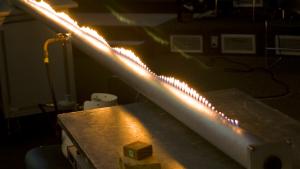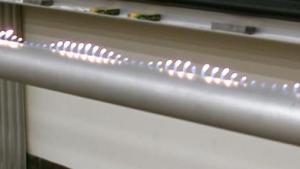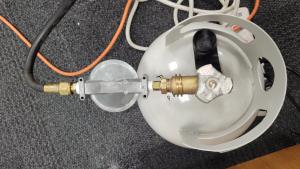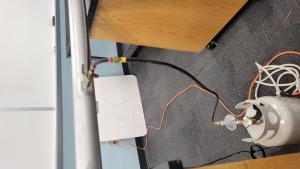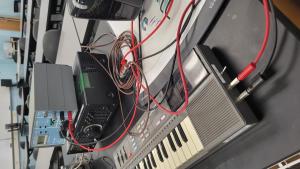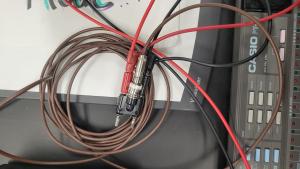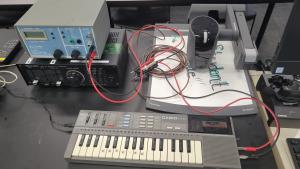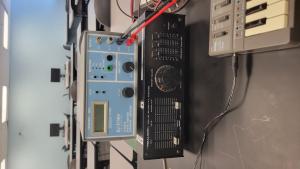A Rubens tube, also known as a standing wave flame tube, or simply flame tube, is a physics apparatus for demonstrating acoustic standing waves in a tube. This demonstration uses a series of small flames to show that a standing sound wave consists of regions at various pressures. The relative flame heights are directly related to the gas pressure at the point of the flame. The tallest flames occurring at points of highest pressure (nodes) and the shortest flames occurring at points of lowest pressure (antinodes).
This demo consists of a 3.5 x 0.07 meter aluminum tube with a row of small holes on top. At one end is a speaker to which an amplifier is attached. The tube is connected to a propane tank through a gas valve at the tube’s center. The amplifier is connected to a signal generator (oscillator) and to a laptop (playing a music selection). The amplifier allows the instructor to switch between both sound sources and control their output levels.
The output of the signal generator is connected to the amplifier’s mic 1 input via a special cable. This cable has a ¼ inch phono plug on one end and a BNC connector on the other. The laptop's line out is connected to the amplifiers AUX input’s left channel. Likewise, this hookup is accomplished using a dedicated cable with a ¼ inch phono plug on one end and a RCA phono plug on the other. The amplifier is connected to the speaker through its 8-ohm output, again using a special cable. The propane gas is from a portable tank that is connected to the tube at its center through a gas valve. To complete the setup matches or an igniter are required and a fire extinguisher needs to be within easy reach of the instructor.
Once the Rubens tube has been properly set up, perform the following steps:
- Make sure all valves are in the “off” position. For the propane tank this means the circular valve is turned clockwise until it reaches a hard stop. For the upper valve (near the aluminum tube), this means it is rotated perpendicular to the line it is attached to.
- Turn the propane tank valve counter clockwise until you hear propane flowing into the rubber line.
- Rotate the upper valve such that propane begins to fill the Rubens tube. The flow rate should be pretty good.
- As the Rubens tube begins filling with propane, run a lighter along the holes on the top of the Rubens tube. If the flow rate is sufficient, the flames will be several inches high.
- Once all holes have been lit, slowly rotate the propane tank valve clockwise until the flames are only about 1 cm high. The flames should be roughly 50% blue.
- Turn on the amplifier and any single electronic device connected making sure the volume is not too loud such that the flames blow out.
NOTE: Failure to follow the start up procedure will likely result in the regulator valve being tripped, preventing the full flow rate of propane into the Rubens tube. If this occurs, close the main propane valve completely and open the top valve. Wait several minutes and restart from step 1.
